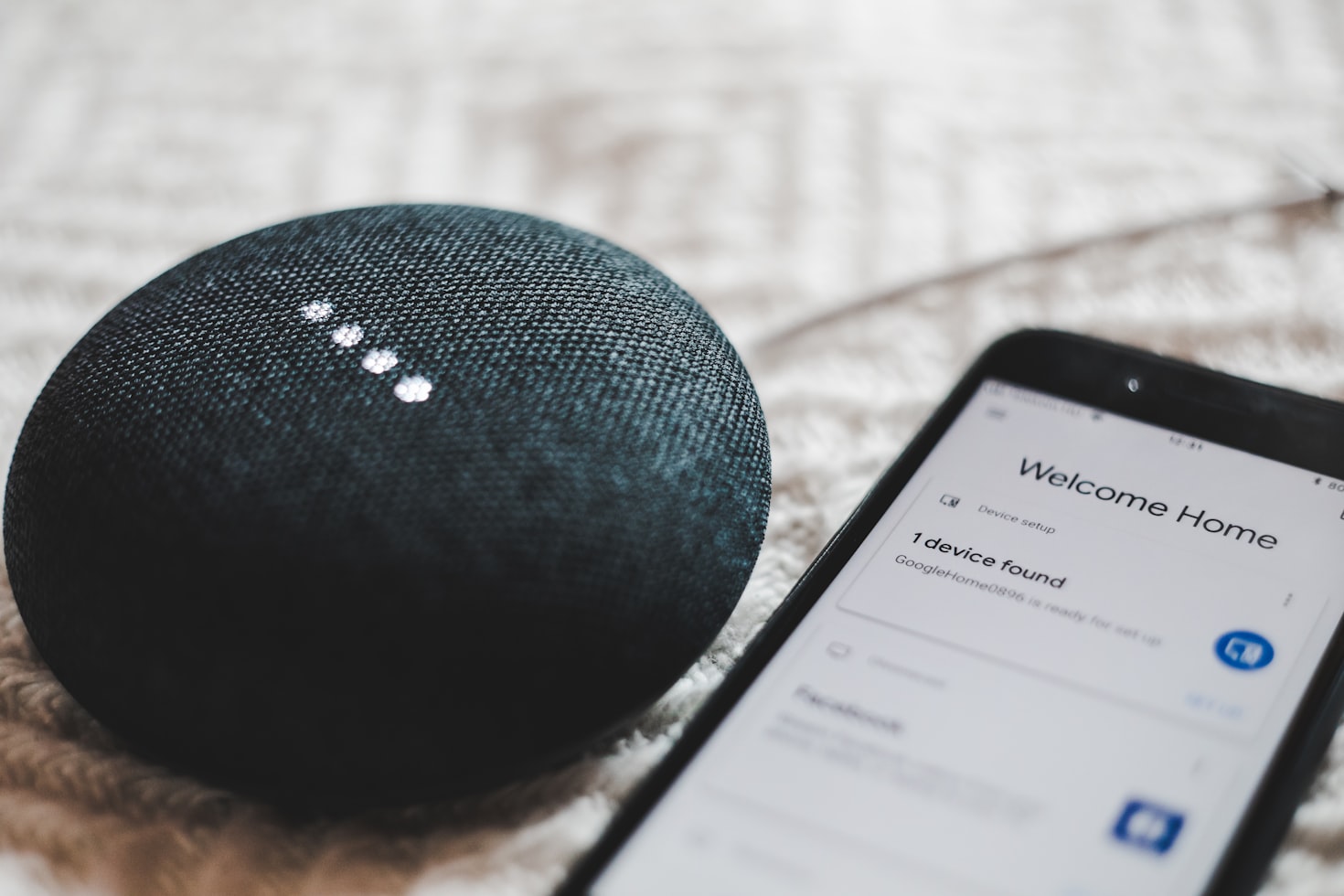
While the form factor and design of our phones have evolved over the years, they're still largely similar in concept where they're a device that we hold and interact with in our hands. Humane is here to challenge that notion with the announcement of the AI Pin, a wearable that we clip onto our clothes.
Humane, for those unfamiliar, is a startup led by former Apple employees. The AI Pin is a badge that is worn on our clothes that is reminiscent of a Star Trek communicator. It does not have a screen nor does it have its own app store, meaning that it only does whatever the company thinks it should do.

It runs on an operating system called Cosmos which relies heavily on AI to accomplish the desired task, meaning that while there are no apps (at least not in the traditional sense) that users can download to do specific things, it will still be capable of getting the job done. There is a camera that can be used to identify objects around the user, and if users need to see information like their messages, there is a built-in projector that can beam the software's interface onto your hand.

This interface can be interacted with through hand and finger gestures which is actually pretty cool if it actually works as advertised. There is also a microphone for users to issue commands and it can also double up as a translator where it can detect a foreign language being spoken and translate it into English.
It's a very interesting approach, but it could be a hard sell. Many of us are used to our phones and how we use them on a daily basis, so it's hard to imagine giving up all of that so suddenly.
Humane is expected to start selling the AI Pin on the 16th of November where it will be priced at $699, but it will also require a cellular connection that will cost $24 per month which also includes access to a bunch of AI tools.

For a long time, sales teams did things the old fashioned way - cold calling potential customers, sending emails, and meeting in person. But now, new technologies are quickly changing the sales game. In this article, we'll look at some of the latest tech tools sales teams are using to boost results. We'll also chat about key technologies shaping modern sales workflows.
Moving to Tech-Powered Sales Tactics
Old school sales focused a ton on outbound prospecting, phone conversations, and in-person meetings. While these approaches still matter, new technologies have created fresh ways for sales reps to connect with potential buyers in a more personal, targeted manner.
According to LinkedIn’s 2022 State of Sales report, over 90% of sales teams now use tech tools like CRMs, sales engagement platforms, and marketing automation software. Companies are investing heavily in cloud computing and new programs to upgrade their sales and marketing operations.
Tech-powered sales strategies offer many upsides, including:
- Automating manual tasks to improve efficiency
- Accessing more sales data and analytics to refine strategies
- Reaching buyers on their preferred digital platforms
- Personalizing messaging to make it more relevant
- Speeding up sales cycles and accelerating deals
With buyers over halfway through their decision making before ever talking to a sales rep, technology is critical for connecting with prospects earlier in their journey. Tech-driven tactics ensure sales teams can actively nurture leads, show ROI quickly, and ultimately drive higher conversion rates.
Simulive Events - A Next Gen Approach
One exciting new tech innovation changing modern sales tactics is simulive. Simulive webinars blend the flexibility of pre-recorded video with the authenticity of live events for a more engaging prospect experience.
With simulive events, sales and marketing teams can easily produce on-demand product demos, trainings, and virtual events with interactive elements like polls, Q&As, and live chats. These hybrid digital experiences boost engagement by allowing audiences to take in info on their own time while still connecting in real-time.
For example, a SaaS startup could use simulive webinars to host a demo day highlighting their platform’s capabilities. Prospects could view sections when convenient and get their specific questions answered live by product experts.
Compared to just pre-recorded content, simulive events drive 43% higher viewer attention, 32% greater recall, and 23% increased purchase intent. As today’s buyers want more dynamic content, simulive webinars are becoming a go-to medium for sales teams aiming to deliver next-level digital experiences.
Capitalizing on Real-Time Interaction
On top of video-based approaches like simulive production, sales teams are also tapping technology to facilitate real-time engagement across channels.
Real-time engagement platforms are gaining steam in commercial real estate, allowing brokers to instantly interact with prospective tenants visiting listings online. By kicking off live chats, brokers can right away field questions, schedule tours, and accelerate deal velocity.
According to real estate developer Granite Properties, leveraging real-time engagement led to 50% more leads and a 36% faster time-to-market for available spaces.
As buyer expectations shift, sales teams are using tech to recreate face-to-face conversation online. Real-time engagement powered by chatbots, live chats, and messaging helps teams nurture prospects proactively and shrink the time between initial interest and closed deals.
Social Media Emerging as a Sales Channel
Once seen solely as a brand awareness tool, social media has morphed into a vital sales channel for engaging buyers directly. Platforms like Facebook, Instagram, and LinkedIn all enable social selling, allowing brands to interact with prospects and generate leads straight from social content.
However, no platform has disrupted sales strategies quite like TikTok. With over 1 billion monthly active users, TikTok has become a key channel for driving conversions. Brands leverage short-form video content to teach audiences, run lead gen campaigns, and drive traffic to sales funnels.
Vendors like Swvl used TikTok to score 1200% more website clicks during their IPO campaign. Others tap into TikTok’s native commerce tools like shoppable videos to enable in-app purchases.
As younger audiences flock to emerging platforms like TikTok, forward-thinking sales teams are expanding social strategies to engage prospects where they’re already hanging out online. Integrating social selling into existing workflows is crucial for maximizing reach.
AI and Automation Reshaping Operations
According to a G2 survey, nearly 75% of SMBs are hesitant to adopt AI and automation in sales and marketing. Concerns around costs, data privacy, and less human interaction contribute to this reluctance.
However, when applied effectively, AI and automation provide major advantages:
- Machine learning algorithms can comb through customer data to identify ideal buyer profiles and refine targeting.
- Chatbots and virtual assistants can qualify leads and book demos 24/7.
- Automated workflows nurture prospects with hyper-personalized messaging at scale.
Leading sales teams combine AI with human oversight and interaction. People.ai blends automation with human nuance around tone and messaging for more impactful outreach. This hybrid model maximizes technology while retaining the human touch.
Though adoption is gradual, AI and automation are streamlining sales workflows. As tasks like lead scoring and data entry become automated, reps can focus on value-driven activities like relationship-building and closing complex deals.
Overcoming Tech Marketing Challenges
Despite the rise of tech, the 2023 Informa Tech Trust in Marketing Index revealed trust remains a major hurdle. Over half of consumers feel overwhelmed by irrelevant promotions and believe brands don’t have their best interests in mind.
To maximize results, tech-driven marketing strategies must prioritize transparency, relevance, and consent:
- Transparency - Clearly communicate how data is collected and used. Assure customers they are in control.
- Relevance - Use data to segment audiences and deliver timely, personalized messaging that provides real value.
- Consent - Allow consumers to opt-in and out of communications. Never spam buyers or use overly pushy outreach.
When leveraged strategically, technology builds trust by demonstrating an understanding of each person's needs. With consumer confidence as the base, tech-driven strategies perform much better across metrics like brand awareness, consideration rate, and lifetime value.
What's Next for Sales Technologies
While old school sales tactics still have merit, blending in new technologies is now essential for success. As buyers expect personalized, on-demand engagement, tech-driven strategies will only get more crucial.
In the near future, expect advanced technologies like AI, VR, and predictive analytics to transform sales workflows. VR could allow prospects to experience products virtually during consideration. Predictive analytics may uncover buyer objections before reps even reach out.
Ultimately, embracing innovation while staying grounded in human relationships is key. With trust, relevance and transparency as guiding principles, sales teams can boost conversions through technology while maintaining authentic human connections. The future looks bright for forward-thinking sales organizations.
Technology will keep rapidly evolving, bringing new opportunities to engage buyers and drive revenue. However, by keeping focused on impact and value, modern sales teams can thrive through any amount of change. The right tools empower reps to nurture prospects in a truly customer-centric way. While the tactics may shift, putting people first will always be the foundation of sales excellence.

In a world that's increasingly focused on sustainability and eco-friendly solutions, electric vehicles (EVs) have emerged as a beacon of hope for a greener future. As the EV industry continues to grow and evolve, so does the technology that drives it. One crucial aspect of this technological transformation is the software that powers EV charging stations. If you're curious about the fascinating world of eMobility software and want to delve deeper into this realm, we have just the solution for you: "Exploring EV Charging Software," an informative and insightful ebook that promises to enlighten and inspire.
Why does software matter in the sphere of eMobility?
Electric vehicles have come a long way, and their adoption continues to accelerate. To meet the increasing demand for EVs, a robust charging infrastructure is vital. But it's not just about hardware; the software that manages and optimizes charging stations is equally important. In our ebook, we explore the fundamental role of software in eMobility, shedding light on the pivotal part it plays in ensuring efficient, accessible, and sustainable charging solutions for all.
What are the involved entities and what digital solutions do they use?
EV charging is a complex ecosystem, involving charging station operators, network providers, automotive manufacturers, and more. In "Exploring EV Charging Software," we take you on a journey to discover the digital solutions these entities employ to make EV charging seamless and user-friendly. From payment processing to real-time data analytics, you'll gain a comprehensive understanding of the digital tools that drive eMobility.
What are the biggest challenges in creating EV charging software solutions?
Building effective EV charging software is not without its challenges. In our ebook, we delve into the obstacles that developers and companies face when creating cutting-edge EV charging solutions. Understanding these challenges is crucial for anyone interested in the eMobility sector, as it provides insights into the industry's growth and development.
What is the role of internal IT departments in EV charging companies?
Internal IT departments are the backbone of EV charging companies, ensuring that software systems run smoothly and efficiently. Our ebook explores the critical role these departments play in managing, maintaining, and innovating EV charging software. From cybersecurity to user experience, we uncover the multifaceted responsibilities of these unsung heroes.
"Exploring EV Charging Software" is a valuable resource for anyone with an interest in electric vehicles, technology, or sustainable living. Whether you're a tech enthusiast, an environmental advocate, or a business professional looking to expand your knowledge, this ebook provides a comprehensive overview of the eMobility landscape.
To download your free copy of "Exploring EV Charging Software" and embark on a journey through the exciting world of eMobility technology, visit our website or follow the link below. Join us in discovering the future of electric vehicle charging and explore how software is driving this transformation. Don't miss out on this opportunity to stay informed and engaged in the eMobility revolution. Download your copy today and become a part of the sustainable transportation movement!
About the author:
Pawel Malkowiak is co-founder and CEO of Solidstudio. After founding Solidstudio, Pawel was an originator in terms of pursuing expertise in eMobility. With the build-up of a solid knowledge-base on industry’s needs & wants, he now keeps a close eye on products’ development. He’s also hugely responsible for the business’ side and designs the business models for our products. Solidstudio.
In the contemporary landscape of digital innovation, the evolution of the Internet of Things (IoT) technology has fundamentally transformed the way we perceive and interact with our living spaces. From intelligent thermostats that adjust temperatures based on our preferences to smart security systems that provide real-time surveillance, IoT devices have seamlessly woven technology into the fabric of our homes. Central to this technological marvel are mobile applications, which act as the conduits of communication between users and their smart devices. In this expansive exploration, we delve into the intricate interplay of IoT devices, mobile applications, and the pivotal role played by PHP backends in crafting intuitive, efficient, and secure smart home solutions.
The Expanding Universe of Smart Homes
Smart homes, once a novelty, have become an integral part of modern living. IoT devices, encompassing a plethora of functionalities, have turned ordinary homes into intelligent environments. These devices range from smart lighting systems that adjust brightness based on natural light to smart refrigerators that alert us when groceries are running low. The beauty of these devices lies not just in their individual capabilities but in their ability to collaborate seamlessly, creating a holistic smart home experience. However, this harmony is orchestrated by the intelligence embedded in mobile applications, which enable users to orchestrate these devices according to their preferences and needs.
In the dynamic world of smart home development, finding skilled PHP developers is essential to ensure seamless integration and optimal functionality. For businesses seeking expertise in PHP development, visit https://lemon.io/hire-php-developers/ to discover professionals who can bring your smart home vision to life.
Mobile Applications: The Gateway to Smart Living
Mobile applications, installed on smartphones and tablets, have become the primary interfaces through which users interact with their smart homes. These applications offer intuitive user interfaces that simplify complex interactions. Through these interfaces, users can control room temperatures, manage security systems, monitor energy consumption, and even receive alerts and notifications. The real magic, however, lies in the real-time, bi-directional communication they establish with IoT devices. Users can issue commands to their devices and, in return, receive real-time updates, ensuring that they are constantly in the loop about the status of their smart home.
PHP Backend: The Command Center of Smart Home Communication
At the heart of this intricate web of communication is the PHP backend, a robust and versatile technology that serves as the backbone of smart home solutions. The PHP backend acts as a command center, orchestrating the flow of data and commands between mobile applications and IoT devices. When a user interacts with a mobile application, the PHP backend processes these requests, translating them into machine-readable instructions understood by IoT devices. This seamless translation is crucial because IoT devices often operate on different protocols and standards. The PHP backend ensures that regardless of the device's communication protocol, the user's command is accurately translated and executed.
Moreover, the PHP backend facilitates a secure environment for data transmission. Security is paramount in smart home solutions, considering the sensitive nature of the information being transmitted. The PHP backend employs state-of-the-art encryption techniques, safeguarding user credentials, device commands, and personal data from potential threats. This robust security infrastructure ensures that smart homes are not just intelligent but also secure sanctuaries for their inhabitants.
Enabling Enhanced User Experiences
The marriage of IoT devices, mobile applications, and PHP backends results in a multitude of enhanced user experiences within the realm of smart homes:
1. Customization and Personalization
Users can customize their smart homes according to their preferences. From setting specific lighting moods to creating intricate schedules for various devices, the level of personalization is boundless.
2. Energy Efficiency
Smart homes, facilitated by real-time data from IoT devices, allow users to optimize energy consumption. Devices can be programmed to operate at energy-efficient levels, reducing wastage and contributing to eco-friendly living.
3. Enhanced Security
Smart security systems, equipped with motion sensors, surveillance cameras, and door/window sensors, provide comprehensive protection. Users receive instant alerts on their mobile applications, enabling swift responses to potential security breaches.
4. Convenience and Automation
IoT devices, coordinated by mobile applications and PHP backends, automate daily tasks. From brewing coffee in the morning to adjusting thermostat settings, these devices anticipate user needs, enhancing convenience.
5. Remote Monitoring and Control
Regardless of physical location, users can monitor and control their smart homes through mobile applications. Whether on vacation or at work, the power to manage one's home is always at one's fingertips.
Real-World Applications
1. Smart Lighting Control
Users can adjust lighting intensity and color schemes based on mood or time of day. Additionally, lighting can be programmed to simulate natural light patterns, enhancing the ambiance.
2. Climate Control
Smart thermostats can analyze user behavior and adjust temperatures accordingly. They can also sync with weather forecasts, ensuring optimal indoor temperatures while minimizing energy consumption.
3. Home Entertainment Systems
Smart TVs, sound systems, and streaming devices can be seamlessly integrated. Users can create custom entertainment experiences through their mobile applications, enhancing their viewing and listening pleasure.
4. Smart Kitchen Appliances
From refrigerators that maintain optimal temperatures to ovens that can be preheated remotely, smart kitchen appliances enhance culinary experiences and simplify meal preparation.
5. Health and Wellness Monitoring
IoT devices can monitor vital signs, exercise routines, and sleep patterns. Mobile applications provide users with detailed health insights, fostering healthier lifestyles.
The Future of Living
As we navigate further into the digital age, the convergence of IoT devices, mobile applications, and PHP backends paints a vivid picture of the future of living spaces. Smart homes are not just about convenience; they are about creating environments that are responsive, adaptive, and attuned to the needs of their inhabitants. The amalgamation of cutting-edge technology and thoughtful design elevates smart homes into intelligent ecosystems that enhance every facet of daily life.
From energy conservation and enhanced security to tailored experiences and remote control, smart home solutions are redefining the very essence of home. The collaborative efforts of IoT devices, mobile applications, and PHP backends are propelling us toward a future where our living spaces are not just places of shelter but holistic environments that nurture, protect, and inspire.
In conclusion, the integration of IoT devices with mobile applications via PHP backends is not merely a technological advancement; it is a paradigm shift in the way we perceive and interact with our homes. It signifies a future where our homes are not just smart but intelligent, where technology seamlessly integrates with our lives, making our daily routines more efficient, enjoyable, and meaningful. As we embrace this future, we step into a realm where the boundaries between the physical and digital worlds blur, giving rise to living spaces that are as dynamic and vibrant as the people who inhabit them. The journey toward this future has begun, promising a tapestry of smart homes that are not just a testament to human ingenuity but also a testament to the limitless possibilities of technology.

After the closure of the 3DS eShop earlier this year, Nintendo announced that it would soon end its online services for the Wii U and 3DS (as well as 2DS) in April next year, essentially ending official online support with a few exceptions. According to an official statement from Nintendo:
Thank you very much for your continued support of our products. In early April 2024, online play and other functionality that uses online communication will end for Nintendo 3DS* and Wii U software. This also includes online co-operative play, internet rankings, and data distribution.
You can find more information about badges for decorating the Nintendo 3DS HOME Menu using Nintendo Badge Arcade here. We will announce a specific end date and timing at a later date.
Please note that if an event occurs that would make it difficult to continue online services for Nintendo 3DS and Wii U software, we may have to discontinue services earlier than planned.
We sincerely thank players for using the online services of Nintendo 3DS and Wii U software over a long period of time and apologise for any inconvenience.
With that being said, it looks like players will still be able to download update data for their games, and re-download their purchased titles. However, the eShop will remain inaccessible for new purchases, and SpotPass will be discontinued as well.
On the other hand, offline solo play will of course still be available for players, as well as StreetPass features. Nintendo adds that the "Pokemon Bank" will still be available for the time being, given that it's used to migrate specific player data from Pokemon games on 3DS to the Nintendo Switch.
The Nintendo 3DS and Wii U were launched in 2011 and 2012 respectively, with the latter being somewhat of a financial loss for Nintendo. By contrast, the 3DS proved to be one of Nintendo's more popular gaming systems, even out-performing the Sony PS Vita in terms of sales and popularity.
© 2023 YouMobile Inc. All rights reserved








